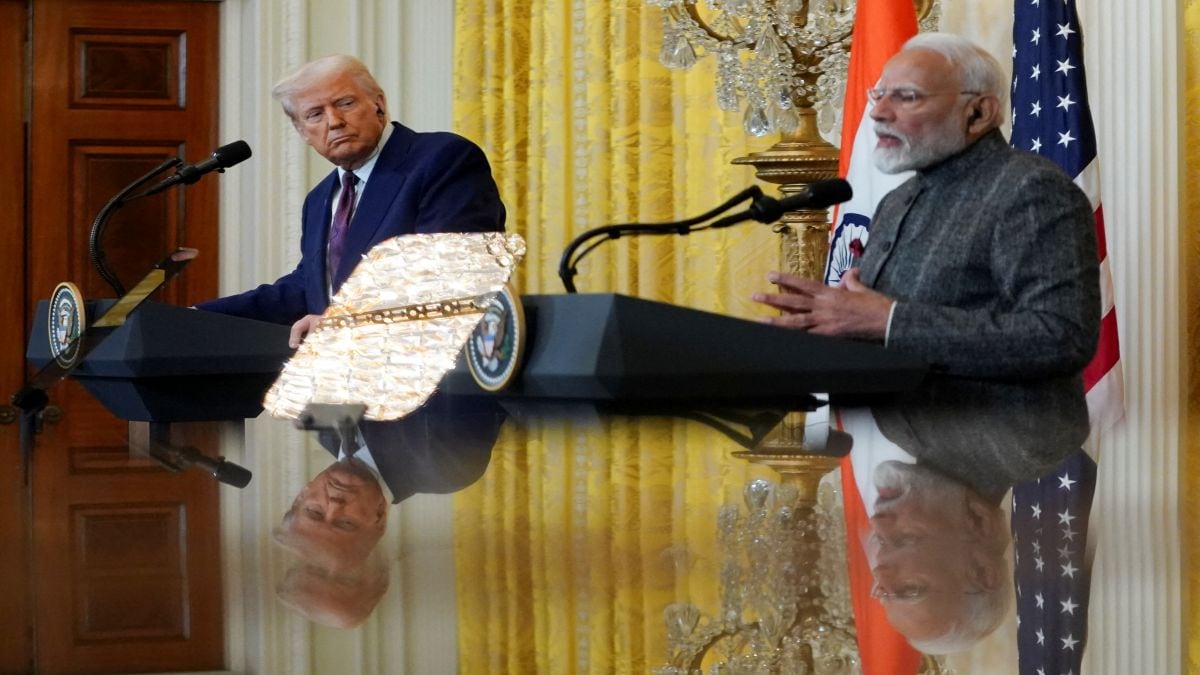

Amidst escalating trade tensions, former U.S. President Donald Trump has declared that there will be no further trade negotiations with India until the ongoing tariff dispute is resolved. This pronouncement follows the U.S. imposition of a total 50% tariff on Indian goods, a move triggered by India's continued import of Russian oil. The decision has sparked criticism from India, which views the tariffs as "unfair, unjustified, and unreasonable".
Trump's stance is firm: "Not until we get it resolved," he told reporters when asked about future trade talks. The White House, justifying the tariffs, cites national security and foreign policy concerns, arguing that India's Russian oil imports, whether direct or indirect, pose an "unusual and extraordinary threat" to the United States.
India has emerged as a major importer of Russian crude oil, especially after the Ukraine war led to Western sanctions and a price cap on Russian oil. This pivot to Russian oil allowed India to secure discounted prices, saving approximately $3.8 billion in the last fiscal year. Today, Russia accounts for about 37% of India's total oil imports, making India one of Russia's top buyers alongside China. This shift has come at the expense of traditional oil suppliers like Saudi Arabia, Iraq, and Nigeria.
India defends its oil imports from Russia as crucial for its energy security, ensuring affordable energy for its 1.4 billion citizens. Government officials have stated that increasing oil imports from Russia was aimed at avoiding supply shortages and preventing excessive price increases. India's External Affairs Minister has emphasized that the country's oil trade is legal, transparent, and essential for national energy security.
The increased tariffs have placed India in a challenging position. India's exports to the U.S. in 2024 amounted to around $87 billion. The new tariffs could significantly impact key sectors such as textiles, marine products, leather, and chemicals. Some analysts predict that India's GDP growth could decline by up to 1% due to the increased tariffs. Experts also foresee a potential reduction of 40-50% in India's exports to the U.S..
India is now the highest-taxed exporter to the U.S., alongside Brazil. This situation is particularly striking when compared to tariffs on similar goods from competitors like Bangladesh, Vietnam, and China, which remain significantly lower.
Despite the trade tensions, India has affirmed its commitment to protecting its interests. Prime Minister Modi has declared that India will never compromise on the interests of its farmers, fishermen, and dairy farmers, even if it means paying a heavy price. This stance reflects India's unwillingness to be seen as yielding to external pressure.
The U.S. move has been interpreted by some as a pressure tactic ahead of ongoing bilateral trade agreement negotiations. The U.S. is seeking duty concessions on various products, including electric vehicles, dairy, wines, and genetically-modified crops. In 2024–25, bilateral trade between India and the U.S. stood at $131.8 billion, with Indian exports accounting for $86.5 billion.
Some experts believe that Trump's actions could inadvertently benefit China. By pressuring India to reduce its Russian oil imports, the competition for discounted Russian barrels may decrease, allowing China to secure oil at even lower prices. This could strengthen China's grip on Russia's energy exports and expand its geopolitical influence.
Despite the current impasse, India is scheduled to host a U.S. trade delegation later this month. India hopes that these talks will lead to a mutually acceptable resolution on tariffs, while also maintaining its independent foreign policy decisions, particularly regarding Russia.